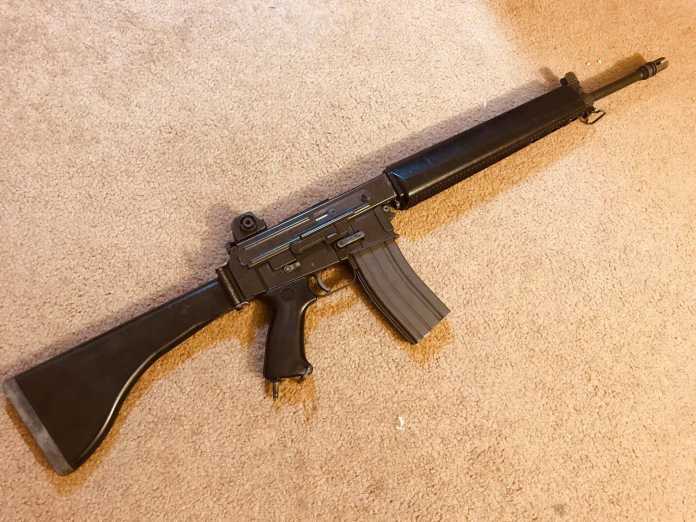
In army weaponry lore, certain firearms become renowned, whereas others operate backstage and have an almost untouchable influence on everything that follows. The AR-18 and its civilian counterpart, the AR-180, are two such unassuming leaders. Frequently, this uncomplicated weapon has had a greater impact on the design of the latest firearms than what is visibly evident, while being in the limelight of other famous guns.

Once it sold the rights to the AR-15 and AR-10 to Colt, Armalite was stuck. The AR-15 was already far down the road to becoming the U.S. military standard-issue M16, and Armalite required something new to maintain traction.

That “something” was the AR-18, a select-fire rifle in 5.56mm, designed with ruggedness, low cost, and ease of production in mind—even for countries lacking access to sophisticated tooling. Its semi-auto counterpart, the AR-180, targeted the civilian marketplace.

What set the AR-18 apart wasn’t so much what it did, but how it did it. While the AR-15 relied on aluminum forgings and a direct impingement system, the AR-18 opted for stamped steel components and a short-stroke gas piston configuration. That choice wasn’t solely about price—it made the gun more durable against fouling and heat, particularly in extreme conditions. It was a purposeful move away from the heat-susceptible direct impingement system that critics tended to excoriate in the AR-15 design.

The production history of the AR-18 is nearly as fascinating as the rifle. Initially produced in Costa Mesa, California, the rifle’s production soon came overseas. Howa in Japan replaced it temporarily, but export controls put a stop to that in due time. Then, the majority of AR-18 and AR-180 manufacturing ended up in the UK, and Sterling Armaments spearheaded that. Both models had their idiosyncrasies: Sterling models, for instance, featured distinctive welds and hardware, and were painted black rather than anodized like their U.S. or Japanese counterparts.

All its intelligent design and firm performance aside, however, the AR-18 never quite gained traction in military use. Some limited numbers were taken on by a few forces, and they saw actual combat in situations such as Northern Ireland during the Troubles, even at the hands of the IRA. Its rugged, utilitarian design also made it one of the go-to options for certain law enforcement units—such as LAPD SWAT—particularly during high-profile sieges like the Symbionese Liberation Army standoff of the ’70s.

The AR-180 was a mixed bag for the average gun enthusiast. It was a well-made and dependable firearm, but the folding stock was not really durable, and the mags were not always easy to find. Finally, Armalite made an effort to bring back the design with the AR-180B that featured a polymer lower and the ability to use standard AR-15 mags. The gun became more user-friendly, which, however, resulted in a loss of some of the original’s rough look in some people’s opinion.

Where the AR-18 truly earns its place in history among firearms, however, is in what followed. Its internal mechanisms—such as the dual recoil spring system, stamped receiver design, and that always reliable short-stroke piston—have carried over into some of the most cutting-edge rifles used today.

Rifles such as the SIG MCX owe much of their internal configuration and operation to what the AR-18 innovated. The philosophy of rifle design that underlies the AR-18—keep it rugged, easy to manufacture, and easy to fix—has been something of a template for the 21st-century combat rifle.

More recently, the AR-18 spirit has been reanimated in the BRN-180 upper receiver, a contemporary interpretation intended to be used on standard AR-15 lowers. It retains the heart of the original—short-stroke piston, double recoil springs—but includes contemporary touches such as M-LOK handguards, adjustable gas blocks, and caliber options other than 5.56. And because the recoil system is contained, it doesn’t require a buffer tube, which means folding stocks are now an option, making it more convenient than ever for shooters today.

Though the original AR-180s are collector items today, their legacy is far from faded. The practical design of the rifle, focused on reliability and ahead-of-the-curve innovations, set the standard for hundreds of rifles to come.

To anyone who examines the history of military firearms or contemporary firearm evolution, the AR-18 is a case study of influence without renown. It didn’t receive large military contracts, but it gained the future by sharing the DNA that’s still being developed in rifles everywhere today.